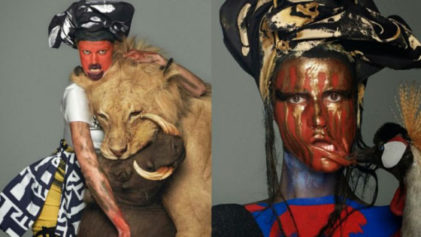Max Ernst wrote of collage, though he could just as easily have been referring to his painting, that it is “the noble conquest of the irrational, the coupling of two realities, irreconcilable in appearance.”
Over the last decade, the painter Iona Rozeal Brown has created a fantastical body of work that unites so many seemingly irreconcilable realities — Japanese ukiyo-e prints and hip-hop; voguing and Noh and Kabuki theater; West African Adinkra symbols and graffiti; Byzantine religious painting and comic-book motifs — that it gives new meaning to the idealized space of the canvas.
On Thursday the first of two concurrent shows of Ms. Brown’s new work will open at Edward Tyler Nahem Fine Art, on West 57th Street in Manhattan, followed by one at Salon 94 Freemans, in Freeman Alley on the Lower East Side. The downtown show, “introducing … THE HOUSE OF BANDO,” opening March 5, takes up where Ms. Brown’s inaugural foray into stage work, “The Battle of Yestermore,” for Performa in 2011, left off. It features a series of iconlike portraits of the voguing stars Benny and Javier Ninja, who performed in the 2011 piece, a dance battle at the intersection of Asian and African-American culture. In the new paintings the Ninjas are joined by the choreographer and dancer Monstah Black, and the three, along with Ms. Brown, have formed the House of Bando, a voguing house named for Tamasaburo Bando, a female impersonator of the Kabuki stage.
Ms. Brown, 46, was raised in Washington and came to painting only in her late 20s, studying at the San Francisco Art Institute and the Yale University School of Art. One of her early epiphanies was the discovery of ganguro, a 1990s movement in Japan in which young girls expressed their love of hip-hop culture by darkening their skin and dressing like their favorite stars. This led to a series of early works known as the “blackface paintings” that jump-started her career, one that is now gaining speed with a host of projects in the works.
Read more: NYTimes

